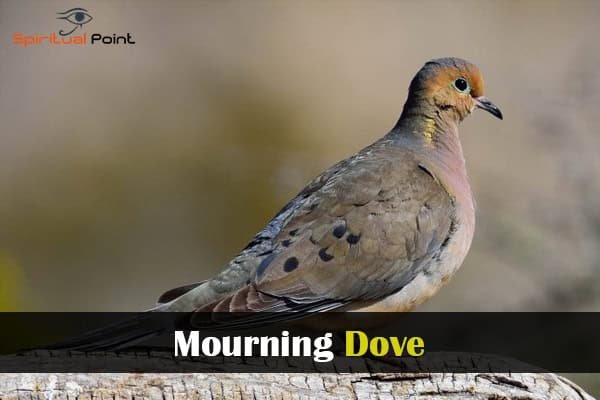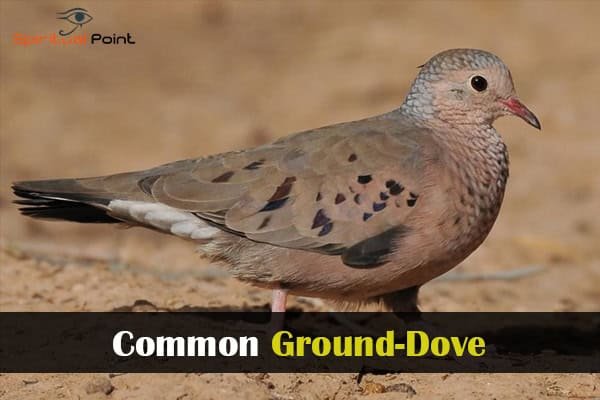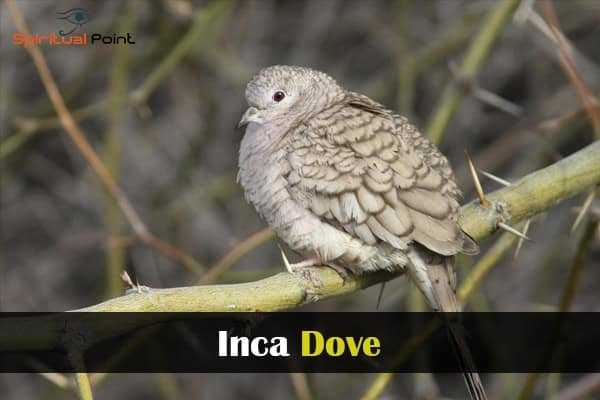Arizona is home to a rich variety of birdlife, and among the most graceful and peaceful are the doves in Arizona. With their soft coos and elegant flight, these birds are a common sight across the state’s deserts, forests, and city parks. From the delicate mourning dove Arizona to the distinctive.
Eurasian collared-dove vocalization, each species offers unique features that fascinate birdwatchers and nature lovers alike. Whether you’re observing their dove cooing sound at dawn or studying their role as seed-eating birds, these gentle creatures bring a special calm to the Arizona landscape. Learning about them adds depth and joy to the experience of birding in Arizona.
Overview of Dove Species in Arizona
Arizona has a rich bird population. In fact, it is one of the best places for bird watchers in the U.S. With its desert climate and open spaces, it supports both ground-dwelling birds and flying species. Some doves are native, while others have been introduced. You’ll find both small and large doves here.
The state’s Arizona bird habitats include deserts, forests, and towns. Each dove has different needs. You can find them near water, in city parks, or in dry areas. These birds are part of the Arizona bird species list and play an important role in nature. From the well-known mourning dove Arizona to the rare band-tailed pigeon habitat, each species is unique.
1. Mourning Dove (Zenaida macroura)
- Scientific Name: Zenaida macroura
- Size: 9–13 inches (23–33 cm) in length
- Wingspan: 17–18 inches (43–45 cm)
- Weight: 4–6 ounces (112–170 grams)
- Diet: Mainly seeds (over 99%); occasionally insects
- Lifespan: 1.5 years average in the wild; up to 19 years in captivity
The mourning dove Arizona is the most common dove in the state. It is medium-sized and has a soft brown body. Its wings have black spots, and its long tail has white edges. These birds are known for their gentle look and peaceful nature. The dove cooing sound they make is soft and sad, like a mourning song. This is how they got their name.
You can find Zenaida macroura in deserts, forests, and backyards. They are good at adapting to their surroundings. They love open fields and areas near water. Dove foraging behavior shows they eat mostly seeds, making them classic seed-eating birds. Their nests are simple and built in trees or even on ledges. Their breeding season lasts from spring to fall, with several broods each year.
2. Common Ground-Dove (Columbina passerina)
- Scientific Name: Columbina passerina
- Size: 5.5–7 inches (14–18 cm)
- Wingspan: 11–12 inches (28–30 cm)
- Weight: 1–1.4 ounces (28–40 grams)
- Diet: Seeds, small fruits, occasional insects
- Lifespan: 3–7 years in the wild
This is the smallest doves in the state of Arizona. Common Ground-Dove identification is easy due to their tiny size and scaly brown feathers. They have short tails and pinkish bills. Males and females look alike, which makes them harder to tell apart without close observation. But their soft buzzing coo helps birders recognize them.
Columbina passerina lives in dry, open spaces. They are true ground-dwelling birds and prefer walking to flying. They bob their heads as they move and pick up seeds from the ground. Also, They are often seen in pairs or small groups. Their small nests are hidden in low bushes. These birds are shy and often stay low to the ground.
Habitat and Behavior:
These doves love warm, dry places. You can see them in Arizona bird habitats like desert washes and farmland edges. Their quiet nature makes them perfect for peaceful birding. They nest close to the ground and often raise several chicks each year. Their role in the local ecosystem is strong, as they help spread seeds.
3. White-Winged Dove (Zenaida asiatica)
- Scientific Name: Zenaida asiatica
- Size: 11–12 inches (28–30 cm)
- Diet: Seeds, grains, fruits, and nectar
- Lifespan: Up to 10 years in the wild
- Wingspan: About 18 inches (46 cm)
- Weight: 4–6 ounces (112–170 grams)
The white-winged dove nesting behavior is unique. These birds prefer to build nests in tall cactus plants, trees, or even in city parks. During summer, they are more active and often seen in groups. Their wings show white edges when flying. They also have a small blue circle around their eyes, which makes them easy to spot.
Zenaida asiatica feeds on fruits, seeds, and nectar. One of their favorite foods is the saguaro cactus fruit, which makes them helpful in seed spreading. Their dove foraging behavior includes flying to high perches, then dropping to the ground to eat. Their flight is fast and direct, and their coo is loud and clear.
Breeding and Nesting:
They breed from spring through summer. Males show off by flying up and gliding down while calling. This courtship display in doves helps attract mates. Females lay two white eggs. Both parents take turns sitting on the nest. Chicks hatch in about two weeks. Their bird nesting behavior is simple but effective.
Food and Foraging:
White-winged doves love eating cactus fruit, grains, and seeds. Their role as seed-eating birds helps local plants grow. They feed in the early morning and rest during the hot afternoon. In cities, they visit bird feeders, showing excellent urban bird adaptation. Watching them fly with their striking wings is a joy for bird lovers.
READ MORE: Blue Jay Spiritual Meaning
4. Inca Dove (Columbina inca)
- Scientific Name: Columbina inca
- Size: 6.5–9 inches (17–23 cm)
- Diet: Seeds, grains, and small insects
- Lifespan: Up to 5–7 years in the wild
- Wingspan: 10–12 inches (25–30 cm)
- Weight: 1–2 ounces (30–58 grams)
Inca doves in Arizona behavior is gentle and calm. They are small with long tails and scalloped feather patterns that look like fish scales. These soft gray feathers shimmer in the sun. They often stay close to human areas and love to sunbathe on warm surfaces like rooftops or fences. They can form tight roosting groups to stay warm at night.
Columbina inca prefers dry, open places near homes. They are peaceful birds and rarely fight with others. They often fly low and rest on branches or wires. You may see them picking up small seeds from the ground. Their soft cooing is hard to hear, but it’s a sweet sound if you listen carefully.
5. Eurasian Collared-Dove (Streptopelia decaocto)
- Scientific Name: Streptopelia decaocto
- Size: 12–14 inches (30–35 cm)
- Diet: Seeds, grains, berries, and occasionally insects
- Lifespan: Up to 10–15 years in the wild
- Wingspan: 18–22 inches (46–56 cm)
- Weight: 5–7 ounces (140–200 grams)
This species was not always here. It came from Europe and Asia but has now spread across America. Dove population expansion helped this species grow fast. Now, it is common in urban doves environments like towns and farmlands. These birds have pale bodies, red eyes, and a black ring around their necks.
Eurasian collared-dove vocalization is a three-part coo that sounds like “coo-COO-coo.” It is loud and often repeated. Streptopelia decaocto is a strong flier and very social. You will often see them in pairs or groups. They are excellent at living near people and feeding from bird feeders and crops.
6. Band-Tailed Pigeon (Patagioenas fasciata)
- Scientific Name: Patagioenas fasciata
- Size: 13–16 inches (33–41 cm)
- Diet: Fruits, berries, acorns, seeds, and grains
- Lifespan: Up to 6–10 years in the wild
- Wingspan: 26–30 inches (66–76 cm)
- Weight: 8–12 ounces (225–340 grams)
This is the largest dove species in the state. It looks more like a pigeon but shares many dove-like traits. It has a dove plumage pattern that includes gray feathers, a white neck line, and a black band on its tail. Band-tailed pigeon habitat includes high mountain forests and canyons. They are shy but beautiful birds.
Patagioenas fasciata loves areas filled with oak and pine trees. They feed on nuts, berries, and seeds. They are strong fliers and can travel far. Their migratory bird species status means they visit Arizona during summer to breed. You may find them near streams in wooded areas. They also form large flocks in feeding zones.
Feeding Habits and Behaviors
These birds are clever when foraging. Their dove feeding habits include looking for fruit, acorns, and seeds. They often feed in treetops, away from danger. During courtship, males fly in circles above the female. This beautiful courtship display in doves is rarely seen but worth the wait. These birds help spread forest seeds across Arizona.
Also Visit: Spiritual Meaning of a Squirrel
Dove Behavior and Feeding Habits in Arizona
Doves are peaceful birds with gentle actions. Most are seed-eating birds that forage on the ground or in trees. Dove feeding habits are simple, yet important. They clean up fallen seeds and help plants grow. Some eat fruits and insects too. Dove migration in Arizona brings changes each season. Birds come and go depending on weather and food.
Each dove has its own way of living. Some like city parks. Others prefer forests or deserts. Their calls, especially the soft cooing vocalization, can tell you who is nearby. If you listen and watch closely, you’ll learn a lot. This is what makes birding in Arizona so special.
Best Time and Places to Spot Doves in Arizona
Spring and fall are the best times to see doves. During these seasons, many species are nesting or migrating. Desert parks, forest edges, and urban backyards are great bird watching locations Arizona birders love. Cities like Phoenix, Tucson, and Flagstaff are full of dove activity.
When planning your trip, bring a field guide and binoculars. Look early in the morning or at sunset. These are the best times to hear the dove cooing sound and see them feeding. If you’re lucky, you might even spot a nesting pair or a courtship flight.
Dove Conservation and Legal Hunting in Arizona
Arizona allows dove hunting during specific seasons. There are limits on how many you can take. Check local laws and get a license before hunting. Dove ecology and interaction with humans means we must be careful not to harm their numbers. Responsible hunters help with dove population expansion studies.
There are protected species, so knowing the collared dove vs mourning dove differences is vital. Hunters, birders, and scientists all play a role in protecting these birds. Conservation groups watch over avian species Arizona depends on. Their work ensures doves stay part of our landscape for years to come.
Final Thoughts on Doves in Arizona
Doves in Arizona are more than just birds. They are a peaceful part of nature, full of beauty and purpose. Whether you’re taking dove pictures for identification or simply enjoying their songs, they add calm to every outdoor trip. With so many types and places to explore, your birding journey is never over.
The next time you visit Arizona, look to the skies and the bushes. Somewhere nearby, a dove may be calling. Grab your guide, your camera, and step into the world of bird photography Arizona style. It’s an experience full of joy, learning, and connection with the world around you.
Check Our Previous Articles:
- 10 Types of White Birds in Florida
- Birds with 8 Letters
- 16 Types of Black Birds in Michigan
- 16 White Birds In Michigan
- Can Squirrels Eat Popcorn?
Frequently Asked Questions
Q1. What type of doves live in Arizona?
Mourning Doves, White-winged Doves, Eurasian Collared-Doves, and Common Ground-Doves are commonly found in Arizona.
Q2. What is dove season in Arizona?
Dove hunting season typically starts on September 1 and has two phases: early (Sept) and late (Nov-Dec).
Q3. What does it mean when you see a dove in your yard?
Seeing a dove often symbolizes peace, love, or a spiritual message, depending on cultural beliefs.
Q4. How can you tell a dove from a pigeon?
Doves are usually smaller and sleeker, while pigeons are larger and more robust with rounder heads.
Q5. How do I know it’s a dove?
Doves have a slender body, small head, long tail, and a soft, cooing call.
Q6. What does a pigeon look like compared to a dove?
Pigeons are bulkier, with shorter tails and thicker necks, and often have iridescent feathers on their necks.






